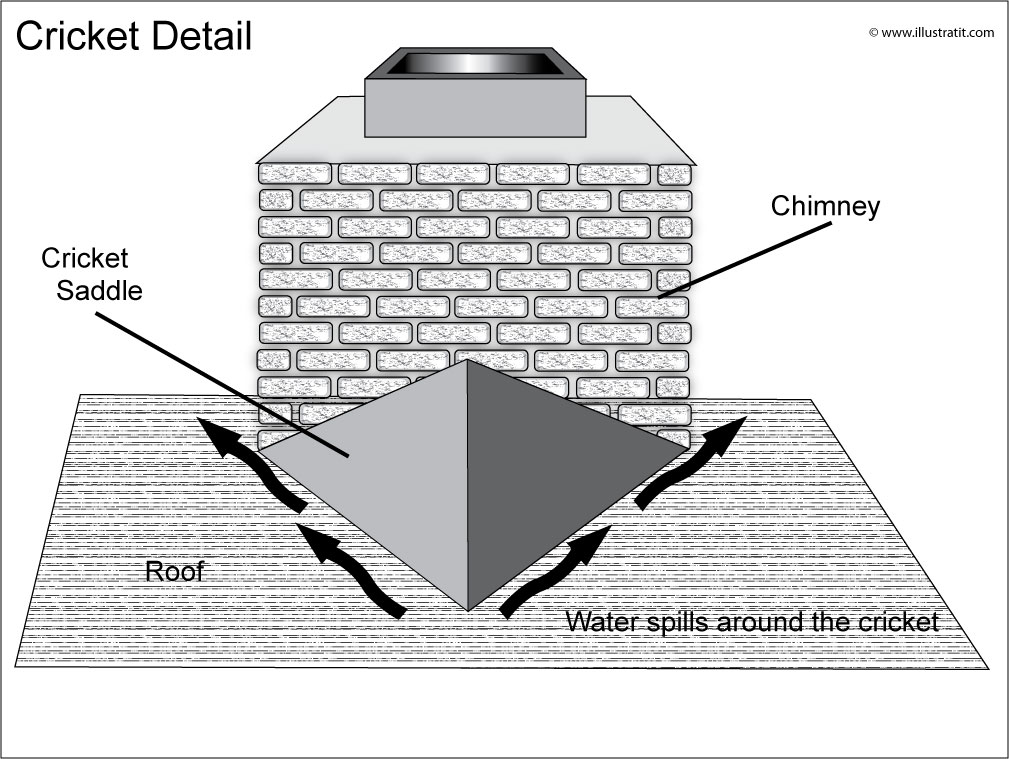Table Of Content
- SADDLE AND CRICKET RECOMMENDED MAXIUMUM L:W RATIOS
- Understanding the Minimum Pitch Requirement for Flat Roofs: A Comprehensive Guide
- Benefits and Importance of Roof Crickets
- How to Intersect Tapered Roof Panels For Proper Slope Roofing it Right with Dave & Wally by GAF
- Tapered installation training
- Proper cricket design.

Its purpose is to divert water away from these vulnerable areas, preventing water from pooling and causing damage. Roof crickets are typically triangular in shape and are built at an angle to ensure efficient water flow. The purpose of a saddle cricket is to redirect water away from the ridge or hip intersection. By creating a sloped surface, saddle crickets ensure that water flows down to the adjacent roof sections, preventing water accumulation and potential leaks. They are particularly effective in areas with heavy rainfall or snowfall, as they minimize the risk of water or snow build-up.
SADDLE AND CRICKET RECOMMENDED MAXIUMUM L:W RATIOS
One of the main advantages of tr aditional roof crickets is their adaptability. They can be tailored to any roof slope and projection size, offering a versatile solution for various roofing situations. And, traditional roof crickets can be covered with the same roofing material as the rest of the roof, ensuring a consistent appearance and seamless integration.
Understanding the Minimum Pitch Requirement for Flat Roofs: A Comprehensive Guide
We just looked at several examples of when a cricket is required and when it is not along with what dimensions the cricket needs to be. Regardless of the width, given this scenario the chimney does not create a condition where the water can be trapped around the chimney. This diagram shows you how to extend the size of your cricket to multiple layers using a 2” ISO. There are a few different panel options available but the easiest is to stick with a Q Panel for the outside layer and add a 2-inch ISO underneath to add slope as needed. The drains should be positioned in the valleys at the lower level of the tapered insulation and be sumped.
Benefits and Importance of Roof Crickets
These crickets are constructed by adding a vertical section at the center of the roof intersection, extending from the ridge down to the valley. The T-shaped design ensures that water is diverted to either side of the valley, reducing the risk of leaks and water damage. When debris, leaves, or other materials gather around roof penetrations, it can obstruct proper water drainage. This can lead to pooling around these spots, increasing the risk of leaks. By safeguarding your roof from water damage, roof crickets contribute to the overall longevity and durability of your roof. A well-maintained roof cricket can add years to the lifespan of your roof.

Let me put it this way, while it is good for every chimney to have a cricket, per code it is not required for a chimney 30 inches or less in width. Chapter 10 of the International Residential Code regulates two types of fireplaces. Those that are constructed on-site using masonry and other approved materials, and those that are factory-built.
Crickets aim to guide rainwater to drains and downspouts so that it flows off and away from the roof. One common mistake is designing a roof cricket that is too small to effectively divert water. A cricket that is undersized may not be able to handle the volume of water or snow runoff, leading to water accumulation and potential leaks. It’s crucial to calculate the appropriate dimensions based on the roof slope, area, and climate conditions.
Tapered installation training
In summary, the importance of professional expertise cannot be overstated when it comes to installing or maintaining a roof cricket. The main purpose of a roof cricket is to divert water away from the intersection between a chimney or wall and the roof. In conclusion, roof cricket design is not merely a technical aspect of roofing; it is a crucial element that ensures the protection and longevity of your property. By understanding the purpose, benefits, and various factors involved in roof cricket design, you can make informed decisions and collaborate effectively with roofing professionals.
stand-up paddleboard with tent invites travelers to camp on boulders, lakes, and car's roof - Designboom
stand-up paddleboard with tent invites travelers to camp on boulders, lakes, and car's roof.
Posted: Fri, 23 Jun 2023 07:00:00 GMT [source]
Asphalt Shingles
A roofer builds a roof cricket out of wood and then adds metal flashing or asphalt shingles on top. During installation, the roofer incorporates the chimney cricket into the chimney flashing system. By strategically diverting water away from vulnerable areas, such as skylights or parapet walls, the cricket design helps prevent water pooling and potential structural damage. Have you ever wondered why some roofs have little triangular structures near their chimneys or other roof projections? These are called roof crickets, and they play a crucial role in maintaining the integrity of your roof.
Proper cricket design.
The half-diamond roof cricket takes the quarter-diamond design a step further by creating a steeper slope. This design offers better water diversion and is more suitable for moderate rainfall and steeper roof surfaces. It is commonly used in regions with varying weather conditions and can handle a larger volume of water runoff.
After all, the industry faces many challenging (and fluctuating) factors, including economic conditions,... We take pride in everything we do, from customer service to our high-quality workmanship. Conservatories are a great way to ensure that you (and your plants) can soak up the sun all year round. Planning and installing a DIY brick or stone paver patio is a big project. Set a budget and explore materials that align with your financial constraints. Like all industries, the roofing industry is constantly evolving to create better products and services that meet our ever-changing needs.
These sections, made from terracotta tiles, provide a seamless transition between the main roof and the chimney or other roof protrusions. It is essential to consult with a professional roofer to determine the appropriate size and angle for the dual slope cricket based on the specific roof and projection dimensions. Find the center of the roof cricket by measuring the span and dividing it by two. Based on this table we need two pieces of information, the roof slope and the width of the chimney parallel to the ridgeline.
By following these tips, you can maximize the functionality and longevity of your roof while minimizing potential issues such as water ponding and leakage. On low-sloped roofs (typically with a slope of 1/4" per foot built into the structure or created with tapered insulation), crickets are also used to help divert water to drains and scuppers. Standing water on low-sloped roofs can lead to structural damage caused by the weight of the ponding water, as well as to debris buildup, and other issues. To help prevent this, contractors install crickets at low areas at the perimeter of the roof, between drains and wall scuppers, and around HVAC or electrical equipment or skylights. They are crucial in preventing water accumulation and the potential structural problems that can arise as a result. Recognizing the importance of properly installed and maintained roof crickets is the first step toward preventing costly repairs and replacements.

No comments:
Post a Comment